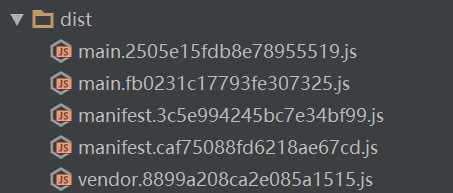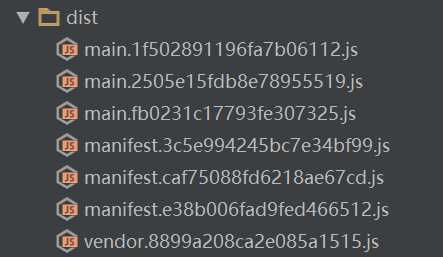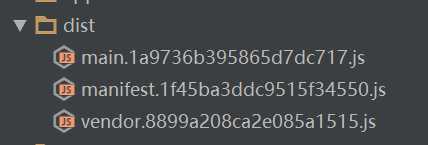标签:vendor tput app node logs 引入 extract more log
配置文件如下
/** * Created by oufeng on 2017/5/6. */ const webpack = require(‘webpack‘); const path = require(‘path‘); const ExtractTextPlugin = require(‘extract-text-webpack-plugin‘); module.exports = { entry: { main: ‘./app/index.js‘, vendor: [‘moment‘] }, output: { filename: ‘[name].[chunkhash].js‘, path: path.resolve(__dirname, ‘dist‘) }, module:{ rules:[ { test: /\.css$/, use: ExtractTextPlugin.extract({ use: ‘css-loader‘ }) }, { test: /.woff|.woff2|.svg|.eot|.ttf/, use: ‘url-loader?prefix=font/&limit=10000‘ } ] }, plugins: [ new ExtractTextPlugin(‘styles.css‘), new webpack.optimize.CommonsChunkPlugin({ name: ‘vendor‘, minChunks: function (module) { // 该配置假定你引入的 bootstrap 存在于 node_modules 目录中 return module.context && module.context.indexOf(‘node_modules‘) !== -1; } }), //为了避免vendor.*.js的hash值发生改变需要输出一个manifest.*.js文件 new webpack.optimize.CommonsChunkPlugin({ name: ‘manifest‘ //But since there are no more common modules between them we end up with just the runtime code included in the manifest file }) ] };
第一次运行 npm run build (webpack)时
dist的文件夹是这样的:

第二次 修改一下 "./app/index.js"的内容 再 运行 npm run build
dist的文件夹是这样的: main.*.js和manifest.*.js都重复增加了一次。

第三次 修改一下 "./app/index.js"的内容 再 运行 npm run build
dist的文件夹是这样的: main.*.js和manifest.*.js又重复增加了一次。

来到这里楼主表示很无语啊,我run build的时候能不能把 之前的main.*.js和manifest.*.js都删除一次昵,只保留公共的vendor.*.js文件就好啦。
于是使用Googel大法,发现有一个插件叫clean-webpack-plugin可以满足我的需求,而且简单易用。
//安装插件 npm imstall --save-dev clean-webpack-plugin
//引入插件 const CleanWebpackPlugin = require(‘clean-webpack-plugin‘);
//webpack.config.js中添加CleanWebpackPlugin插件 /** * Created by oufeng on 2017/5/6. */ const webpack = require(‘webpack‘); const path = require(‘path‘); const ExtractTextPlugin = require(‘extract-text-webpack-plugin‘); const CleanWebpackPlugin = require(‘clean-webpack-plugin‘); module.exports = { entry: { main: ‘./app/index.js‘, vendor: [‘moment‘] }, output: { filename: ‘[name].[chunkhash].js‘, path: path.resolve(__dirname, ‘dist‘) }, module:{ rules:[ { test: /\.css$/, use: ExtractTextPlugin.extract({ use: ‘css-loader‘ }) }, { test: /.woff|.woff2|.svg|.eot|.ttf/, use: ‘url-loader?prefix=font/&limit=10000‘ } ] }, plugins: [ new ExtractTextPlugin(‘styles.css‘), new webpack.optimize.CommonsChunkPlugin({ name: ‘vendor‘, minChunks: function (module) { // 该配置假定你引入的 bootstrap 存在于 node_modules 目录中 return module.context && module.context.indexOf(‘node_modules‘) !== -1; } }), //为了避免vendor.*.js的hash值发生改变需要输出一个manifest.*.js文件 new webpack.optimize.CommonsChunkPlugin({ name: ‘manifest‘ //But since there are no more common modules between them we end up with just the runtime code included in the manifest file }), new CleanWebpackPlugin( [‘dist/main.*.js‘,‘dist/manifest.*.js‘,], //匹配删除的文件 { root: __dirname, //根目录 verbose: true, //开启在控制台输出信息 dry: false //启用删除文件 } ) ] };
这样的配置之后,无论怎么执行多少次的npm run build 后dist的目录都是这个样子的。


webpack2利用插件clean-webpack-plugin来清除dist文件夹中重复的文件
标签:vendor tput app node logs 引入 extract more log
原文地址:http://www.cnblogs.com/oufeng/p/6819320.html